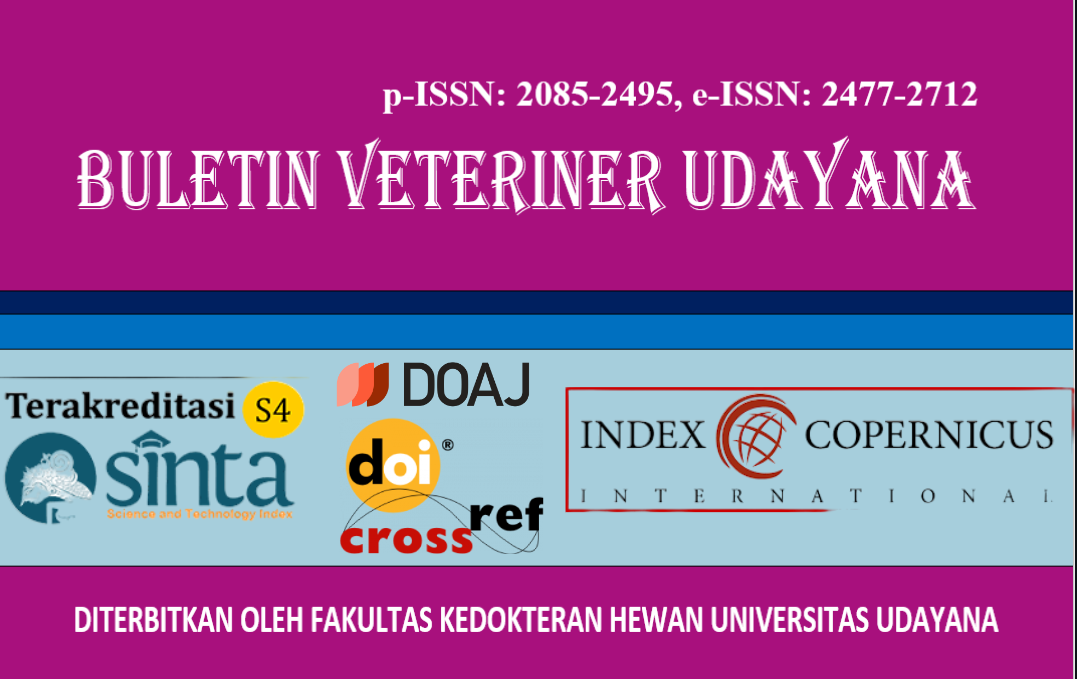OPTIMIZATION OF ISOPROPYL--D-THIOGALACTOPYRANOSIDE (IPTG) CONCENTRATION AS A TRIGGER FOR BOVINE LACTOFERRINE (BLF) GEN EXPRESSION
DOI:
https://doi.org/10.24843/bulvet.2024.v16.i06.p22Keywords:
Gen, IPTG, concentration, lactoferrin SDS-PAGEAbstract
Lactoferrin in cow's milk is known as Bovine Lactoferrin (bLf). Currently, lactoferrin is being developed as an ingredient in vaccines and medicines. As a vaccine material, the plasmid gene bLf is expressed with Isopropyl-b-D-Thiogalactopyranoside (IPTG) to form recombinant proteins. The volume of IPTG used to induce gene expression depends on the bacteria's volume. Different concentrations of IPTG can generally affect the expression rate of recombinant proteins. Therefore, this study determined the optimal concentration of IPTG in expressing bLf protein. The study began with a gradual bLf culture from 1ml of Terrific Broth (TB) media, if the growth is good, upscaling to 10ml culture media. The bLf culture was incubated in a shaker incubator at a speed of 120rpm for 48 hours, at a temperature of 37ºC. After the growth of good bacteria, it was induced using IPTG with varying final concentrations of 0.125mM, 0.25mM, 0.5mM and 1mM. Re-incubated in a shaker incubator for 4-6 hours. The bLf culture was then centrifuged for 10 min at 6000rpm. Centrifugation results in the form of supernatants were removed, while the sediment was added as much as 300μl of PBS. The culture was ultrasonicated for 10 years with an amplitude of 50%. Furthermore, it was analyzed using the SDS-PAGE method. The test began by adding a buffer of 15μl to 45μl of sonicated results and heated at 95ºC for 10 minutes, then electrophoresis on acrylamide gel. The results showed that in each treatment or replicate there was a bLf protein. Visually, it was seen that there was no significant difference in the variation of IPTG concentration treatment for expressing the bLf plasmid gene. Adding IPTG to express bLf genes with lower or higher concentrations did not affect the bLf proteins produced. Lowering the IPTG concentration from 1μM to 0.125 can reduce production costs. Further testing is needed to use lower concentrations of IPTG in other plasmid genes.




